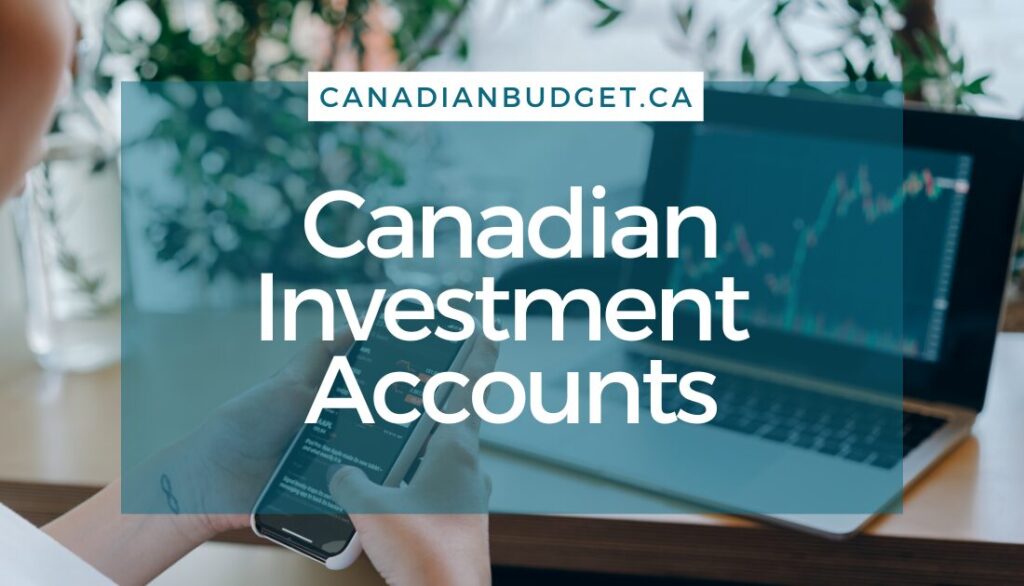If you are new to investing, you might be wondering what the Canadian investment accounts are available, and which is the correct account to choose. The right account will depend on your financial goals and what you qualify for. We will introduce the various investment accounts in Canada so you can choose the proper account for your goals. Understanding investment accounts in Canada can help you select the correct investment account and get started on the right path.
Many of Canada’s available investment accounts include the term “savings plans” in their name, so they are often mistaken only to be savings accounts and not for investments. However, with many of the accounts, the actual value is in the shielding or deferring of taxes, which has a much more significant impact on investing rather than saving. Of course, you can do both, but many Canadians hear “savings” in the name, and the idea of investing never enters their minds.
Canadian Investment Accounts
Table of Contents
ToggleLet’s go over all the main investing accounts in Canada available to everyday Canadians.
Registered Retirement Savings Plan (RRSP)
The RRSP is a tax-advantaged account aimed at retirement savings for Canadians from 18-71 years of age. The RRSP account is ideal for people looking to save for retirement and who want to benefit from immediate tax deductions.
Key Features of the RRSP Account
- Tax Deductibility: Contributions are tax-deductible.
- Tax Deferral: Investment growth is tax-deferred until withdrawal.
- Contribution Limits: Based on 18% of the previous year’s earned income, up to an annual maximum (plus unused contribution room from prior years).
- Withdrawal Rules: Taxed as income upon withdrawal; penalties for early withdrawals, except for specific programs like the Home Buyers’ Plan (HBP) and Lifelong Learning Plan (LLP).
- Home Buyers Plan: Borrow from your RRSP to help with the down payment on your first home. “Budget 2024 proposes to increase the HBP withdrawal limit from $35,000 to $60,000”
Tax Free Savings Account (TFSA)
The TFSA is my favourite, and one of the most flexible of the Canadian Investment Accounts. The TFSA is a flexible, tax-free account for various savings and investing goals. Available to Canadians 18 years of age or older. The TFSA is ideal for either short-term or long-term savings and investing without tax implications on growth or withdrawals.
Key Features of the TFSA Account
- Tax-Free Growth: Investment earnings are not taxed
- Withdrawal Flexibility: Withdrawals are tax-free and can be re-contributed in subsequent years.
- Contribution Limits: Set annually by the government, amounts are cumulative if not used. The TFSA contribution limit for 2024 is $7000.
Registered Education Savings Plan (RESP)
The RESP account is specifically for saving toward the costs of post-secondary education. Ideal for parents and guardians saving for a child’s education.
Key Features of the RESP Account
- Government Grants: Contributions can attract Canada Education Savings Grant (CESG) and Canada Learning Bond (CLB) for low income families
- Tax-Deferred Growth: Investment earnings grow tax-free until withdrawal.
- Withdrawal Rules: Withdrawn contributions are tax-free, while earnings and grants are taxed at the student’s rate (often lower).
- Contribution Limits: The RESP account has a lifetime limit of $50,000 per beneficiary.
- If money is not used for post secondary studies, can be rolled over into your RRSP

First Home Savings Account (FHSA)
In 2023, the government introduced the First Home Savings Account to help Canadians purchase their first home. We already have the RRSP, which allows Canadians to withdraw money from their RRSP (which needs to be repaid). However, this new account offers the best of both worlds. Your contribution to the FHSA (like the RRSP) is tax deductible, and like the TFSA, it’s tax-free. Unlike the RRSP, you do not have to pay it back to yourself.
Key Features of the FHSA Account
- Eligibility – First-time home buyers
- Contribution limits: $8000 per year, maximum $40,000
- Can be used in combination with the HBP from the RRSP
- Does not have to be paid back
- If not used to buy a home within 15 years, can be rolled over into your RRSP
Registered Disability Savings Plan (RDSP)
The RDSP is a savings account designed to help families prepare for the financial well being of a person who qualifies or the Disability Tax credit (DTC).
Key Features of the RDSP Account
- Government Contributions: Canada Disability Savings Grant (CDSG) and Canada Disability Savings Bond (CDSB) are available.
- Tax-Deferred Growth: Investment growth is tax-deferred.
- Contribution Limits: Lifetime contribution limit of $200,000.
- Withdrawal Rules: Taxable when withdrawn; specific rules for withdrawal depending on the beneficiary’s age.
Registered Retirement Income Fund (RRIF)
Once you turn 71, you must transition your RRSP into one of three options. Transfer your RRSP to a RRIF, withdraw it or purchase an annuity.
Key Features of the RRIF Account
- For RRIF’s No Additional contributions are allowed
- Growth is tax-deferred
- RRIF holders must make annual withdrawals
Locked In Retirement Account (LIRA)
If you leave an employer that offers a pension plan, one option is to have those funds transferred to a Locked in Retirement Account (LIRA). This account holds the funds until retirement, and allows you to take on self direction of the account if desired.
Key Features of the LIRA Account
- For pension contributions from former employers
- No new contributions in cash can be added to a LIRA Account.
Non Registered Accounts
A non registered account is a standard investment account without particular tax advantages. Usually available in Cash or Margin accounts. A Margin account means the brokerage can lend you more money than you currently have available to make investments. Ideal for those who have maxed out their registered accounts or are looking for flexibility without tax restrictions.
Key Features of Non Registered Accounts
- Contribution Limits: This account has no limits on contributions or withdrawals.
- Taxation: Investment income (interest, dividends, capital gains) is taxed in the year earned.
- Flexibility: No restrictions on the use of funds.
Final Thoughts
Each of the available Canadian investment accounts has its own benefits and specific uses. Selecting the appropriate account through your preferred brokerage will help you reach your goals is an important step. Still Unsure? Consider consulting a fee-based financial planner to choose the correct investment accounts and formulate a strategy to achieve your goals. And check out Courses and Tools that can help you learn more about investing.
About The Author
Jessica Morgan
Jessica Morgan is the founder and CEO of Canadianbudget.ca. She is passionate about personal finance and helping Canadians improve their financial literacy by providing more Canadian focused financial content. A millennial mom of one, she has a burning obsession with all things personal finance.
Jessica has a BA in East Asian Studies from York University and a Masters in Business Administration from Toronto Metropolitan University. She is a career public sector employee with a Hybrid Pension, and an advocate for Canadian women to improve their personal finance knowledge.

